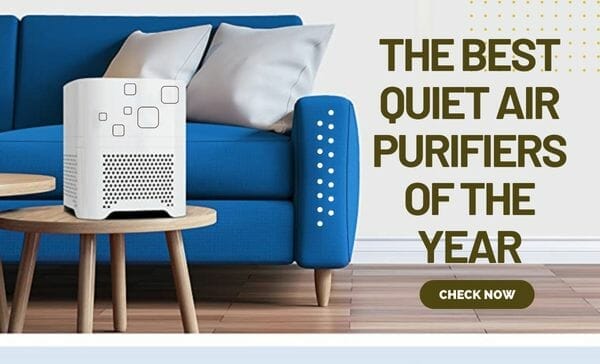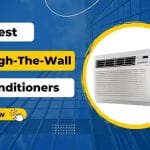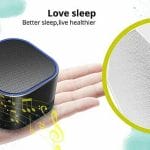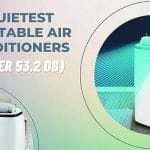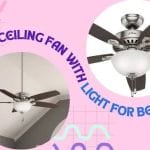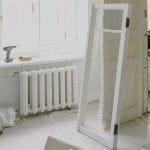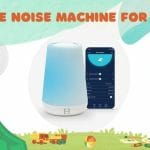As an affiliate, we may receive commissions from purchases made via our links at no additional cost to you.
What is a Quiet Air Purifier?
A quiet air purifier is an appliance that helps to improve the quality of the air in a room by reducing contaminants such as dust, pollen, and pet dander. This type of purifier typically uses a HEPA (high-efficiency particulate air) filter to trap these particles, and often also features activated carbon to remove odors.
Some quiet air purifiers are designed for specific rooms or areas in the home, while others are portable and can be used in any space.
Why is My Air Purifier So Loud?
An air purifier emits ‘ambient noise’. In a given environment, ambient noise is all noise present without taking into account the sound an individual is directly monitoring or producing due to his or her work activities. Imagine a coffee shop with a live band.
In addition to the music from the band, there are other sounds like the espresso machine and people ordering coffee in the background. Despite the fact that air purifiers emit a noise, it is in the background of our daily activities at home.
Variations in noise levels can be caused by air purifier model and operating speed. Decibels or dB(A) are used to measure the noise level of an air purifier. Decibels, dB(A), are scaled in powers of ten on a logarithmic scale.
The unit of measurement is not just for marketing, it is rooted in mathematics for practical application. A 50dB(A) air purifier, for example, is ten times louder than a 40dB(A) air purifier. When looking for the quietest air purifier, it can be confusing since both sound pressure and sound power are measured. You need to know what decibel you are buying to get the quietest air purifier.
The sound pressure scale is lower than the sound power scale. We hear common sounds every day, but how loud are they in decibels?
0 dB(A) is near-total silence, 20 dB(A) is whispering, 45 dB(A) is normal conversation, 75-85 dB(A) is toilet flushing, 90 dB(A) is baby crying, 120 dB(A) is jet engine, and 157 dB(A) is balloon popping. There are other factors contributing to an air purifier’s noise level.
Do You Need a Smart Air Purifier?
Most people don’t realize how important it is to have an air purifier in their home. Indoor air pollution is one of the leading causes of respiratory problems, and many people are not aware of the dangers.
There are many different types of air purifiers on the market, and it can be difficult to know which one to choose. However, there are a few things you should keep in mind when making your decision.
First, you should look for an air purifier that has a high CADR rating. This stands for clean air delivery rate, and it indicates how well the purifier removes airborne contaminants. The higher the CADR rating, the better the purifier will perform.
Second, you should make sure that the air purifier you choose can handle at least two air changes per hour. This means that it will be able to completely replace the air in your room every 30 minutes or so. If you have a larger room, you may need a purifier with a higher air change rate.
Finally, you should consider where you will be using the air purifier. If it is for a bedroom, you may want one with a lower
How Do Air Purifiers Work?
Air purifiers work by trapping and removing pollutants from the air. They can remove odors, dust, and other airborne contaminants. Air cleaners can also help improve your indoor air quality sensor by reducing dust mites, activated carbon, and other large particles. Air purifiers filter the air by trapping dust particles and other air pollutants. This helps to reduce air pollution and improve air quality.
Types of Air Purifiers
Air purifiers are a growing industry as more and more people become aware of the importance of air quality in their homes. There are many different types of air purifiers on the market, but they all share one common goal: to clean the air in your home.
One type of air purifier is the HEPA filter. A HEPA filter is a type of filter that removes 99.97% of all particles greater than 0.3 microns in size. This makes it an effective tool for removing allergens, dust, and pet dander from the air.
Another type of air purifier is the ozone generator. An ozone generator uses ozone gas to clean the air. Ozone is a powerful oxidizing agent that can kill bacteria, viruses, and mold spores.
- HEPA Filters: If you suffer from allergies, asthma, or another respiratory condition, you may be interested in purchasing an air purifier with a HEPA filter. A HEPA filter is capable of capturing pollutants as small as 0.3 microns in size, which is small enough to capture even the finest particles.HEPA filters are not the only type of air purifier available, but they are the most effective at removing contaminants from the air. Some other types of filters, such as activated carbon filters, can also remove harmful pollutants from the air, but they are not as effective as HEPA filters.When shopping for an air purifier, it is important to consider the size of the unit and the type of filter it uses. Some units are very large and may not be suitable for use in a small room.
- Activated Carbon: An activated carbon air purifier is an appliance used to clean the air in a room. The activated carbon filter traps and eliminates odors. However, it cannot completely remove all of the harmful pollutants in the air.
- Electrostatic Precipitators: An air purifier with an electrostatic precipitator uses high voltage electricity to remove particles from the air. The electric field created by the high voltage pulls the particles out of the air and into a collection area. The precipitator can remove very small particles, including smoke and pollen.
- Ultraviolet Light Air Purifiers: Ultraviolet Light Air Purifiers are a new technology that is being used to clean the air. These purifiers use UV rays to kill the germs floating in the air. They are small and can be placed on a desk or table. They are also quiet and do not take up a lot of space.
- Ozone Generators: An ozone generator is a device that produces ozone. Ozone is a gas that is made up of three oxygen atoms. It is a powerful oxidizing agent, which means it can break down other molecules. Ozone generators are used to purify the air by breaking down odors and other pollutants. They are commonly used in hotels and other places where there is a lot of traffic.
What can an air purifier do for you?
An air purifier can remove particles from the air, including dust, pollen, and other fine particles. Activated carbon filters can also remove odors and VOCs (volatile organic compounds). HEPA air purifiers are designed to remove 99.97% of particles 0.3 microns or larger from the air, making them very effective at removing dust, dust mites, and other particulates.
Wildfire smoke is a mixture of particulate matter and gasses, so an air purifier with both an activated carbon filter and a HEPA filter can be very effective at reducing the amount of smoke in your home. Air pollution is a growing problem in many cities, and air purifiers can help reduce the amount of particulate matter in your home, as well as the risk of health problems associated with exposure to high levels of particulate air pollution.
Do Air Purifiers Help With COVID-19?
There is no scientific evidence that air purifiers help with COVID-19, however, they can help with other respiratory illnesses. Air purifiers with true HEPA filters can remove 99.97% of airborne particles, including viruses and bacteria. HEPA air purifiers are particularly effective at improving indoor air quality, which is beneficial for people with respiratory conditions.
What Is A HEPA Air Purifier?
A HEPA air purifier is a device that uses an air filter to remove particles from the air. HEPA stands for “high efficiency particulate air” and these filters are able to remove 99.97% of particles that are 0.3 microns in size or larger. This makes them very effective at removing contaminants from the air and can improve the quality of air in a home or office.
How To Control Your Quiet HEPA Air Purifier?
To control your quiet HEPA air purifier, you’ll need to choose the right setting for the size of your room and the level of air pollution. For smaller rooms, the low setting will be sufficient, but for larger rooms or rooms with high levels of air pollution, you’ll need to use the higher setting. You can also adjust the speed of the fan to control how much noise the purifier makes.
What Is The Best Quiet HEPA Air Purifiers?
What is the best true HEPA air purifier? This is based on many factors including the ability to remove odors, large particles, and indoor air pollution. The best HEPA air purifiers will have a high CADR rating and be able to do an air change per hour. They will also be quiet and have a smart feature that allows them to be controlled based on the quality of the air.
Can HEPA air purifiers capture the coronavirus?
Yes, HEPA air purifiers can capture the coronavirus. HEPA filters are designed to capture 99.97% of particles that are 0.3 microns in size or larger, and the coronavirus is about 0.1 microns in size. So, while HEPA air purifiers can’t completely eliminate the virus from the air, they can greatly reduce the number of viruses in the air and help protect you from exposure.
Can air purifiers help with wildfire smoke?
Air purifiers can help with wildfire smoke by removing particles from the air. HEPA air purifiers are especially effective at this, and can help to improve air quality in your home or office. If you are concerned about wildfire smoke, consider investing in an air purifier to help improve the air quality in your space.
What settings should you run an air purifier on?
To keep your air purifier running smoothly, you should follow the manufacturer’s instructions on what settings to use. In general, it is best to run the purifier on the highest setting when you are home and lower the setting when you are away. This will help keep your air purifier working efficiently and help improve the quality of your indoor air.
Do you even need an air purifier?
Air purifiers are designed to clean the air in your home, and they can be very effective at reducing air pollution. However, they are not necessary for everyone. If you live in a city with high levels of air pollution, or if you have allergies or other respiratory problems, an air purifier may be a good investment. Otherwise, you may be able to get by without one.
Are air purifiers a waste of money?
There is divided opinion on whether air purifiers are a waste of money. Some people believe that air purifiers are necessary to improve the quality of indoor air, while others believe that purifiers do not work effectively and are not worth the investment. The truth is that air purifiers can be beneficial in some cases, but they are not a cure-all solution for poor indoor air quality.
If you have concerns about the quality of your indoor air, it is best to consult with an expert to find the best way to improve it.
Where is the best place to put an air purifier?
The location of an air purifier can also have an affect on the noise level. For example, a room with carpet and furniture will help to absorb some of the sound rather than an empty room with tall ceilings and wood floors. When it is time to shop for a new air purifier, it is important to find out what the decibel rating is before purchasing.
Since there is no requirement to list the noise emissions on air purifiers, products with no label could mean it is louder than you would like.
An air purifier can help to purify the air in your home, and the best place to put one is in a room that is around 100 square feet.
The best place to put an air purifier is in a room where you spend a lot of time, such as a bedroom or living room. Air purifiers work by drawing in polluted air and running it through filters to remove contaminants. The size of the purifier you need depends on the square footage of the room.
Do Air Purifiers Really Work?
There is a lot of debate surrounding air purifiers and whether or not they are actually effective. Some people swear by them, while others say they don’t notice a difference. The truth is, it depends on the type of air purifier you’re using.
HEPA filters are considered the most effective at trapping particles like dust, pollen, and pet dander. If you have allergies or asthma, a HEPA filter can significantly affect your symptoms. Air filters are less effective, but they can still help to reduce the number of airborne contaminants in your home.
An Affordable Big-Room Air Purifier
An air purifier is a device that removes contaminants from the air in a room. These devices commonly remove odors and square footage in large rooms. We tested many different air purifiers, but the activated carbon type is most effective for big spaces.
How to set up, use, and maintain your air purifier
Air purifiers can help you to achieve cleaner air in your home. You may want to use an air purifier in your bedroom if you want to clean the air before you sleep. Some air purifiers come with HEPA filters that can trap smaller particles. To set up your air purifier:
- Follow the instructions in the manual.
- Once it is set up, turn it on and let it run.
- Check the filter regularly and replace it when needed.
8 Benefits of an Air Purifier
Air purifiers are a necessity for anyone that suffers from allergies or asthma. Standard air purifiers work well to remove larger particles from the air, but they can’t always remove the smaller particles that cause problems for people with allergies or asthma. HEPA technology filters are designed to remove 99.7 percent of the airborne particulate matter, including tiny dust mites and pollen spores. This makes them ideal for people with allergies or asthma, and they can also be helpful for people who live in areas with high levels of air pollution.
1. Relieves Symptoms of Asthma
Asthma is a common lung disease that inflames and narrows the airways. Symptoms include wheezing, coughing, and chest tightness. Asthma can be controlled with medication and by avoiding things that trigger attacks, such as smoke and pollen. Some people find relief from their asthma symptoms by using cannabidiol (CBD).
Dogs and cats are some of the most popular pets in the world. They come in a variety of shapes, sizes, and colors. While they all have unique features, one similarity they share is that they both shed hair throughout the year. Pets often scratch themselves to help relieve any itchy sensations, which can cause hair to spread all over the house.
Fortunately, there are ways to minimize shedding and keep your home clean. Even if you don’t have pets, there are other triggering factors for asthma such as pollen and dust mites.
Window screens and air conditioners help keep pollen out, but when they’re not used, pollen can quickly enter a home. Pollen is a fine powder released by trees, flowers, and other plants as part of the process of reproduction.
The Environmental Protection Agency (EPA) reports vacuuming your bed, carpet, and floors can eliminate many pollutants, but some remain suspicious. Contaminants such as dust mites, pet dander, cockroach allergens, and mold spores can cause asthma and other respiratory problems. Vacuuming helps to remove these particles from your environment, but it is not a cure-all.
Some of these allergens are very small and can become airborne again very quickly. If you suffer from allergies or respiratory problems, taking other steps to reduce your exposure to these pollutants is important.
HEPA filters are a type of air filter that are specifically designed to capture very small particles and pollutants. These filters are found in many household air purifiers, and they can help to improve the quality of the air in your home. HEPA filters work by trapping the pollutants in the air as it passes through the filter. This helps to reduce the amount of contaminants that you breathe in, and it can also help to reduce the symptoms of allergies or asthma.
Air purifiers are devices that clean the air in a room by removing pollutants and allergens. Some air purifiers include replaceable pre-filters for trapping larger particles, so the HEPA filter can more effectively remove smaller particles. This can prolong the life of the HEPA filter and improve the air quality in the room.
2. Eliminates Harmful Chemicals from Indoor Environments
According to the EPA, Americans spend approximately 90% of their time indoors. Unfortunately, many harmful chemicals can be found in indoor environments. Volatile organic compounds (VOCs), for example, are a group of chemicals that can cause a variety of health problems, ranging from headaches and nausea to cancer.
Fortunately, there are ways to reduce the amount of harmful chemicals in our indoor environments. One way is to install an air purifier. Air purifiers can remove VOCs and other harmful pollutants from the air. Another way to reduce exposure to harmful chemicals is to use natural cleaning products. Products that contain harsh chemicals can release VOCs into the air and contribute to indoor pollution. Using natural cleaning products helps reduce exposure to these harmful chemicals.
Even if you don’t live in large cities with high vehicular traffic, your home atmosphere could still be polluted by emissions from cars, trucks, and other vehicles. In addition to the air pollution caused by vehicle emissions, there’s also noise pollution from traffic. Traffic noise can be a significant annoyance and can also contribute to health problems such as high blood pressure and heart disease.
3. Neutralizes Unpleasant Odors
Some chemicals such as gasoline, benzene, and formaldehyde break down and release very foul odors. These smells can be overwhelming and cause discomfort. Air fresheners are often used to counteract these smells, but they can be expensive and contain harmful chemicals.
A simple, inexpensive way to neutralize unpleasant odors is by using baking soda. Baking soda absorbs the bad smells and leaves a fresh scent behind. It can be sprinkled on carpets, furniture, or anywhere else that needs it.
In recent years, there has been a growing concern over the levels of volatile organic compounds (VOCs) in the ambient air. These chemicals have been linked to many health problems, including respiratory issues, migraines, and brain fog. In an effort to address these concerns, many people have turned to air purifiers as a way to improve air quality.
But do air purifiers really work? And if so, do they provide any other benefits besides improved air quality?
A new study from the National Institutes of Health (NIH) shows that low VOC levels in the ambient air can improve productivity and performance. The study was conducted in two phases. The first phase involved exposing participants to different levels of VOCs and measuring their cognitive performance.
The second phase involved exposing participants to different levels of VOCs and measuring their productivity.
Cooking food for guests can sometimes be a daunting task. The last thing you want is for them to smell smoke or cooking oil when they walk in your door. However, there are a few things you can do to prevent this from happening. The first step is to make sure your kitchen is clean and free of any smoke or cooking oil smells.
The next step is to cook with caution. Try not to cook anything that will produce a lot of smoke or cooking oil smells. If you have guests coming over, it might be a good idea to cook something simple like grilled cheese sandwiches or chicken breasts.
Finally, make sure you have plenty of air fresheners on hand so that you can quickly get rid of any cooking smells that might linger in the air.
4. Reduces the Chances of Airborne Diseases
According to the Centers for Disease Control and Prevention, airborne diseases are infections that spread through the air. These diseases can be caused by viruses, bacteria, or other organisms. They can cause a wide range of symptoms, from mild to life-threatening. Some of the most common airborne diseases are the common cold and flu.
Airborne diseases are a severe health threat. They can cause serious illness and even death. They can also spread quickly and easily, making them a significant public health concern.
Fortunately, there are steps that we can take to reduce our risk of getting an airborne disease. The most important is to practice good hygiene. This includes washing your hands regularly and thoroughly, and avoiding contact with sick people.
The air quality in your home is important to your health. You should have an air purifier with a HEPA filter to capture bacteria and viruses. These particles can cause respiratory problems, such as asthma, and other health issues. The best way to protect yourself and your family is to remove the cause of the air pollution.
5. Improves Sleep
Lack of adequate sleep causes daytime drowsiness, affecting your productivity the next morning. To avoid these sleep disruptions, it’s best to use HEPA air purifiers because they filter out most allergens from your room. Cleaner air gives you a better night’s sleep.
While many people might think that allergies are strictly outdoor triggers, indoor allergens can also be a major problem. In fact, indoor allergens such as bacteria, fungi, and dust mites can trigger allergies or hay fever symptoms in some people. This is why it’s essential to take steps to reduce the amount of these allergens in your home.
One way to reduce the number of indoor allergens is to keep your home clean and free of clutter. Vacuum regularly and sweep floors often. You should also wash bedding and curtains in hot water at least once weekly. And remember to dust frequently, especially areas where you spend a lot of time, like the couch or bed.
Another way to reduce indoor allergens is to use air filters. Air filters can help remove pollen, dust, smoke, and other particles from the air.
6. Removes Harmful Radon
The breakdown of naturally-occurring radioactive elements such as uranium found in certain building materials produces radon gas. Radon is a colorless and odorless gas emitting from building materials like rocks, soil, and granite.
Watch out for cracks on the floor, walls, or plasterwork. The carcinogenic radon gas leaks into your environment through these cracks. Radon gas damages the cell linings of the lungs, leading to cancer. A
2013 EPA assessment indicates there could be as many as 21,000 deaths annually in the US related to lung cancer caused by radon gas.
To reduce the risk of radon pollution, use air purifiers. HEPA and activated carbon filters can trap radon particles and radon gas, protecting you from its harmful effects.
The EPA has just released a report stating that the installation of a radon mitigation system in your home can reduce levels of this harmful gas by up to 99%. Radon is a naturally occurring radioactive gas that is estimated to cause 21,000 lung cancer deaths each year in the United States. It is the second leading cause of lung cancer, after smoking. The good news is that it’s easy and relatively inexpensive to install a radon mitigation system in your home.
7. Eliminates Hazardous Asbestos Particles
Removing asbestos from your home or workplace is essential to protect yourself and your loved ones from the harmful effects of asbestos. Asbestos is a hazardous material that can cause serious health problems, including mesothelioma, lung cancer, and asbestosis.
If you have any asbestos in your home or workplace, it is important to have it removed by a professional team. At Abatement Technologies, we specialize in the safe removal of hazardous materials like asbestos. We use the latest technology and equipment to eliminate all traces of asbestos particles from your home or workplace.
We are proud to offer our clients a safe and affordable solution for removing asbestos from their homes or workplaces. Our team of experts will work diligently to ensure that your home or workplace is free of all hazardous materials, including asbestos. Contact us today for a free consultation!
8. Can Increase Life Expectancy
In general, indoor air pollution is about two to five times worse than outdoor air pollution. In fact, according to the World Health Organization (WHO), over 4 million people die prematurely every year as a result of exposure to indoor air pollution. This is because indoor air pollutants, such as carbon monoxide, nitrogen dioxide, and formaldehyde can affect your cardiac, respiratory, and even neurocognitive health.
For example, long-term exposure to high levels of carbon monoxide can lead to heart disease, while exposure to ammonia can cause lung irritation and asthma attacks.
Furthermore, indoor air pollution can also impair cognitive function and increase the risk of dementia. Thus, it is important to take steps to reduce your exposure to indoor air pollutants.
The Top 3 Best Budget Air Purifiers
There are many different types of air purifiers on the market, but not all of them are created equal. When it comes to budget air purifiers, there are a few things you should look for to ensure you’re getting the best possible product.
First, make sure the air purifier has a true HEPA filter. This type of filter is able to remove 99.97% of airborne particles, making it much more effective than a standard filter.
Second, choose an air purifier that is quiet. Some models can be quite loud, so it’s important to find one that won’t disturb your peace and quiet. Finally, select a budget air purifier that is the right size for your needs. If you have a large room, you’ll need a model that can cover that space.
There are many great budget air purifiers on the market, but these three models are some of the best. The Levoit Core 300 Air Purifier is compact and efficient, perfect for small spaces. The Honeywell HPA300 True HEPA Air Purifier is ideal for larger rooms and features an activated carbon filter to remove odors. For the quietest option, try the Blueair Classic 280i Air Purifier. This
What You Need to Know Before Buying a Quiet Air Purifier
If you’re looking to buy a quiet air purifier, there are a few things you should keep in mind.
First, ensure that the purifier you’re considering has a true HEPA filter. This will ensure that it can effectively purify the air of particles and odors.
Second, consider the size of your home and choose an air purifier that is appropriately sized for it. The larger your home, the more powerful your purifier will need to be.
Finally, take into account your budget and choose a purifier that fits your needs and budget. With these factors in mind, you’ll be sure to find the right one for your home.
1. Size Compatibility
When looking for an air purifier, it is important to consider the size of the room that will be purified. Air purifiers are designed to clean the air in rooms of specific sizes. Some air purifiers are designed for small rooms, while others are designed for large rooms.
It is important to choose an air purifier that is appropriate for the size of the room. If an air purifier is too small, it may not be able to clean the entire room. If an air purifier is too large, it may be more expensive than necessary and may use more energy than necessary.
When choosing an air purifier, it is important to consider the size of the room and choose an air purifier that is appropriate for that size.
2. Noise Level
It’s no secret that air purifiers can be noisy. In fact, most air purifiers with HEPA filters produce noise ranging from 35 to 70 decibels. That may not seem like a lot, but it can be disruptive if you’re trying to sleep or work in a quiet environment.
The good news is that there are some very quiet air purifiers available on the market. Some of the models below produce noise levels as low as 20 decibels, which is practically silent. These are the models for you if you’re looking for an air purifier that won’t disturb your peace and quiet.
3. HEPA Filters
HEPA filters are an important part of air purification, trapping small particles to improve the quality of the air you breathe. To get the most out of your HEPA filter, it’s important to choose a purifier with a true HEPA filter. Some cheaper models have filters that claim to be HEPA-like or HEPA-type, but these don’t trap as many particles and don’t offer the same level of filtration.
A true HEPA filter is certified to meet specific performance standards the United States Department of Energy set. These filters can trap 99.97% of all particles larger than 0.3 microns, including smoke, pollen, and pet dander. If you’re looking for a reliable way to improve the air quality in your home, make sure you choose a purifier with a true HEPA filter.
4. Asthma and Allergy Friendly Certification
Asthma and allergy sufferers often have difficulty controlling their environment because of the many triggers present in everyday products.
For years, these individuals have had to rely on trial and error to determine which products work best for them. A new certification, called asthma and allergy friendly, is designed to help these people find the right products with ease. This certification is awarded to household goods that have been proven to be low- or no-trigger for asthma and allergies. To earn this certification, companies must complete a rigorous testing process that assesses a product’s ability to reduce triggers.
5. Clean-Air Delivery Rate (CADR)
An air purifier’s CADR (Clean Air Delivery Rate) specifies its overall cleaning speed for a particular size room. It shows the cubic feet per minute of air that an air purifier can clean in one minute. The higher the CADR, the faster the air purifier can clean the room. This is important to know when choosing an air purifier, as you want one with a high CADR to clean your room as quickly as possible.
In general, particles are classified according to their size. Smoke particles are the smallest and can range between 0.1 to 0.3 microns. Dust particles vary between 2.5 and 10 microns in size. Larger particles, such as pollen, range from 10 to 100 microns, while very large objects can be several millimeters or more in size.
In order to understand how air purifiers work, you must first understand what CADR is. CADR is an acronym that stands for Clean Air Delivery Rate. It is a measurement of how much air an air purifier can clean in a minute. This is an important measurement to consider when purchasing an air purifier because it determines how quickly the purifier can clean the air in your home.
For example, an air purifier with 400 CFM will purify the air in your home more quickly than one with only 100 CFM.
6. Air Change Per Hour (ACH) Rating
If you’re like me, you probably don’t think about the air in your room very often. But, believe it or not, the air quality in your home can have a big impact on your health. One way to measure the quality of the air in your home is with an ACH rating. The ACH rating measures how many times per hour the entire volume of air in your room gets filtered. A higher rating means that the air quality is better.
There are a few things you can do to improve the air quality in your home. One of the simplest things is to keep your windows and doors closed as much as possible. You can also buy an air filter for your furnace or buy an air purifier for your room. If you have pets, make sure to keep their hair and dander under control. And finally, try to avoid smoking indoors.
Air Change Per Hour (ACH) ratings are used to determine how often the air in a room should be replaced. The rating is determined by the number of times per hour the entire volume of air in a room is replaced. This rating is important for determining how often you should clean or replace your air filter.
7. Ozone Emission
People who suffer from asthma, allergies, and other respiratory conditions should be cautious of air purifiers that produce ozone gas. Ozone gas can be damaging to the lungs and cause a variety of health problems. If you are considering purchasing an air purifier, be sure to read the reviews and research the product before making a purchase. Many safe and effective air purifiers on the market do not produce ozone gas.
8. Maintenance
HEPA air cleaners are energy-efficient, but the filters should be changed once in three months for optimum benefits. Generally, replacing filters cost around $100 per year. If you buy an air purifier with a combination of filters, you may spend more on changing filters.
For example, if your air purifier contains HEPA and activated carbon filters, you will have to change both filters every 3 to 4 months, which may cost you more than $100 per year.
As technology advances, so does the way we use it to improve our quality of life. One example of this is the quiet air purifier. These machines are becoming more and more popular because they offer a great way to reduce allergies. Unlike traditional air purifiers that make a lot of noise, these new machines are nearly silent. This makes them perfect for people who want to get rid of allergens without having to deal with a lot of noise.
What to Look For in an Air Purifiers in 2024
An air purifier is a device which removes contaminants from the air in a room. These devices are commonly used to remove allergens, dust, smoke, mold, and pet dander from the air. Air purifiers typically use one or more of the following technologies: HEPA filters, activated carbon filters, and ozone generators.
When purchasing an air purifier, it is important to consider the specific needs of your home. The size of the room, the level of air pollution, and the type of contaminants you wish to remove will all impact the type of air purifier you should purchase. The most important factor in choosing an air purifier is the Clean Air Delivery Rate (CADR). This is a measure of how quickly and effectively an air purifier can clean the air in a room. Room size, pollution level, and desired purity all play a role in choosing the right CADR for your needs.
Another important consideration when purchasing an air purifier is the type of filter used. HEPA filters are the most effective at removing particulate matter from the air. Activated carbon filters are effective at removing odors and chemicals from the air. Ozone generators are effective at killing mold and bacteria. True HEPA
5 Best Quietest Air Purifiers on the Market 2024
There are a few different types of air purifiers on the market, and choosing the best one depends on your needs. If you’re looking for a quiet air purifier, there are a few things to keep in mind.
First, consider the noise level. Some air purifiers are very quiet, while others make a bit more noise.
Second, think about the size of the room you need to purify. Some air purifiers are designed for larger rooms, while others are better suited for smaller living spaces.
Third, choose an air purifier with the features you need. Some air purifiers come with activated carbon filters to remove odors, while others have HEPA filters to remove allergens and pollutants.
fourth, decide how often you need to use the air purifier. If you want to keep the air in your home clean all the time, you’ll need an air purifier that can run continuously.
fifth, consider your budget. Air purifiers range in price from around $50 to $500, so find one that fits your needs and budget.
The 5 best quiet air purifiers on the market are:
Top Pick: hOmeLabs 4-in-1 Compact quietly Air Purifier.
When we think about air purifiers, the first thing that comes to mind is the large, industrial machines that are used to clean the air in hospitals and other large buildings. However, there are also smaller, personal air purifiers available on the market. One such air purifier is the hOmeLabs personal air purifier. This air purifier has a filter with a 99.97% efficiency rating that quietly purifies the air in your home. It is small enough to fit on a desk or nightstand, and it has an LED indicator light that tells you when the filter needs to be replaced. The hOmeLabs personal air purifier is a great option for people who want to improve the quality of the air in their home without having to purchase a large, industrial machine.
The hOmeLabs personal air purifier is a great option for those looking for a compact and travel-friendly air purifier. At just 6.7 x 6.7 x 7.5 inches, it’s one of the smallest on the market, making it easy to take with you wherever you go. It also features a filter life indicator to help you keep track of when it’s time to replace the filter. Additionally, the hOmeLabs personal air purifier has a CADR rating of 100+, making it an effective option for removing pollutants from the air.

hOmeLabs 4-in-1 Compact Air Purifier Main Featured.
- Detach the Cap
- Remove the Filter
- Place the Cap and Twist
- Press the Reset Button
- 4-stage of filtration
LEVOIT LV-H132 Air Purifiers for Home
We all want to ensure that the air we breathe is clean and safe, but with all of the pollution and allergens in the world, it can be hard to know how to achieve that. LEVOIT offers a range of air purifiers that use ozone-free filtration to remove 99.97% of airborne particles, making sure your home is free of harmful toxins. The LV-H132 model comes with a built-in UV-C light that kills bacteria, viruses, and other microorganisms, so you can breathe easy knowing your air is clean and healthy.
LV-H132 handbag was chosen by 958,256 customers across 9 countries. The bag is simple but has a stylish and classic design, which is favored by many women. The excellent quality and unique style of Louis Vuitton handbags have made them popular all over the world.

LEVOIT LV-H132 Main Featured.
- Ozone-free filtration
- Whisper-quiet as 25db
- Easy to use 3 fan speed
- Small and portable.
PureZone Medium-Large Room Air Purifier
If you’re looking for an air purifier that can handle a medium to large room, the PureZone from Pure Enrichment is a great option. It has a three-stage filtration system and a true HEPA filter, which can remove up to 99.97% of allergens and pollutants from the air. The Purge Zone also features a built-in UV-C light sanitizer to kill bacteria and viruses.
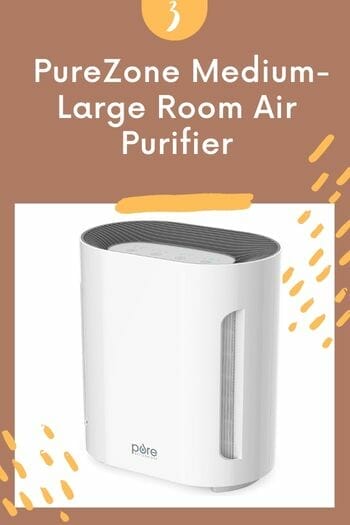
PureZone Purifier Main Feature.
- 3-stage air purification
- Built-in UV-C light
- Energy-efficient & easy to use
- True HEPA pre – filters
Rabbit Air BioGS 2.0 Ultra Quiet HEPA Air Purifier
The BioGS 2.0 air purifier from Rabbit Air is a top-of-the-line model that can handle rooms up to 550 square feet in size. It features a True HEPA filter to remove 99.97% of particles as small as 0.3 microns, as well as an activated carbon filter to remove odors and other pollutants. The BioGS 2.0 is ultra quiet, with a noise level of just 22 dB, making it perfect for use in bedrooms and nurseries. It also has a built-in timer, allowing you to set it to run for 1, 4, or 8 hours, and comes with a five-year warranty.
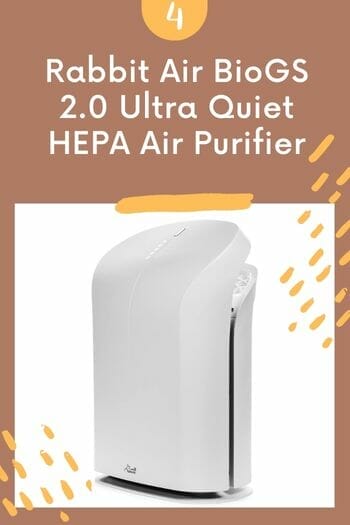
Rabbit Air BioGS 2.0 Main Feature
Handle rooms up to 550 square feet
Allergy Odor Filters
4 speed fan
Remote control
Fellowes AeraMax 300 Large Room Air Purifier
The Fellowes AeraMax 300 Large Room Air Purifier is a top of the line air purifier that can handle mold, odors, dust, smoke, allergens and germs. The True HEPA filter captures 99.97% of particles as small as 0.3 microns in size, making it an ideal choice for those with allergies or asthma. It also features a carbon filter to reduce odors, and a germicidal light to kill bacteria and viruses. The AeraMax 300 is capable of purifying rooms up to 300-600 square feet in size, making it perfect for large rooms or even whole homes.
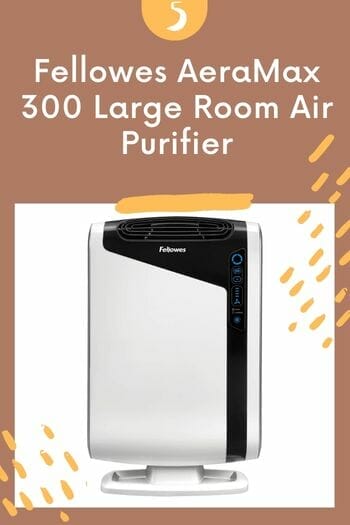
Fellowes AeraMax 300 Main Feature
- Covers by 300-600 square feet
- 4 Fan speed
- True HEPA Filter
The Best Air Purifiers of 2024
As the world becomes more industrialized, the air we breathe becomes more polluted. To combat this, many people are turning to air purifiers to help improve the quality of the air in their homes. But with so many different models on the market, it can be hard to know which one is right for you.
To help you make a decision, we’ve compiled a list of the best air purifiers of 2024. We considered factors like room size, air changes per hour, activated carbon filters, and budget to create this list. So no matter what your needs are, you’re sure to find an excellent air purifier on our list.
Best air purifier overall
The best air purifier overall is the one that can cleanse the most square feet of space, among the best at removing odors, and equipped with a true HEPA filter. A true HEPA filter is important because it is able to remove 99.97% of airborne particles that are 0.3 microns or larger. HEPA filters are also effective at reducing noise levels. Activated carbon filters are also important because they can remove odors and VOCs (volatile organic compounds) from the air.
When looking for an air purifier for your bedroom, it is important to find one that has a high CADR rating for both smoke and dust. The higher the CADR rating, the better the unit is at cleaning the air.
Best air purifiers in our tests
Air purifiers are devices that remove contaminants from the air in your home. These devices can help to remove odors, pollutants, and other airborne irritants, making them a great choice for use in the bedroom or other indoor spaces.
There are many different types of air purifiers on the market, so it can be tough to know which one is right for you. To help narrow down your choices, we’ve tested a variety of air purifiers and compiled a list of the best ones on the market.
Our top pick is the Coway AP-1512HH Mighty Air Purifier, which is designed for use in larger rooms up to 361 square feet. This purifier features HEPA filters that capture 99.97% of airborne pollutants, and it’s also one of the quietest air cleaners we tested.
The Levoit LV-H132 Air Purifier is a great choice if you’re looking for a budget-friendly option. This compact purifier is designed for small spaces up to 161 square feet and features three fan speeds to suit your needs.
To decide which air purifier is right for you, consider the size of the room you need to.
Best Quiet Air Purifier: Questions and Answers
What is the best quiet air purifier?
This is a difficult question to answer as it depends on a number of factors, such as the size of the room, the level of air pollution, the type of air purifier, and the noise level.
There are a few things to keep in mind when choosing a quiet air purifier.
First, HEPA filters are generally the most effective at removing pollutants from the air.
Second, the noise level is important – you don’t want an air purifier that is so loud it prevents you from sleeping or working.
Finally, consider the cost of replacement filters and the overall cost of ownership when making your decision.
The best way to find the right air purifier for your needs is to read reviews and compare models. Some of the best quiet air purifiers on the market include the Blueair Classic 605, the Coway AP-1512HH, and the Levoit LV-H132.
Are air purifiers bad for you?
The verdict is still out on whether or not air purifiers are bad for you. Some people believe that they are, because they emit ozone, which can be harmful to your health in high doses.
However, others believe that the benefits of having an air purifier outweigh the risks of ozone exposure. Ultimately, it is up to you to decide whether or not an air purifier is right for you.
Where should I place my air purifier?
An air purifier can be a valuable addition to your home, but you may not know where to place it. Some people put their air purifier in the living room, while others put it in the bedroom. There are pros and cons to each placement.
If you put your air purifier in the living room, it will help to improve the air quality for the entire family. However, if you only have one air purifier, it may not be able to clean the air adequately in a large space.
If you put your air purifier in the bedroom, it will help to improve the air quality for you specifically. This is because we spend around eight hours a day sleeping in our bedrooms, so having an air purifier there can be especially beneficial.
Do air purifiers help you sleep better?
Many people believe that air purifiers help you sleep better by removing allergens from the air. While research is inconclusive on whether or not air purifiers actually help improve sleep quality, there are many reasons why they might. Air purifiers can help reduce asthma and allergy symptoms, which can keep you up at night. They can also remove dust, pollen, and other particles from the air, which can cause respiratory problems. By reducing these irritants, air purifiers may help you get a better night’s sleep.
Can air purifiers prevent coronavirus?
There is no evidence to support that air purifiers can prevent coronavirus. The World Health Oragnization has not found any specific benefits of air purifiers in relation to the prevention of coronavirus. In fact, some studies suggest that air purifiers may actually worsen the spread of respiratory viruses, as they can create an environment that is more conducive to the growth of bacteria and other microorganisms.
Therefore, it is important to consult with a health professional before purchasing or using an air purifier, as they may not be effective in preventing coronavirus.
Read More: Quietest Ceiling fans with light for Bedroom : Quiet Ceiling Fans 2024
Conclusion
The indoor air quality in many homes is poor, and this has spurred the demand for air purifiers. Air purifiers work to decrease the levels of pollutants in the air, and they are especially important for people who have allergies or asthma. There are a number of different types of air purifiers available, and it is important to select the right one for your needs.
Some portable air purifiers are, while others are installed in your home. It is important to read the reviews before you buy an air purifier, as some of them do not work very well.
